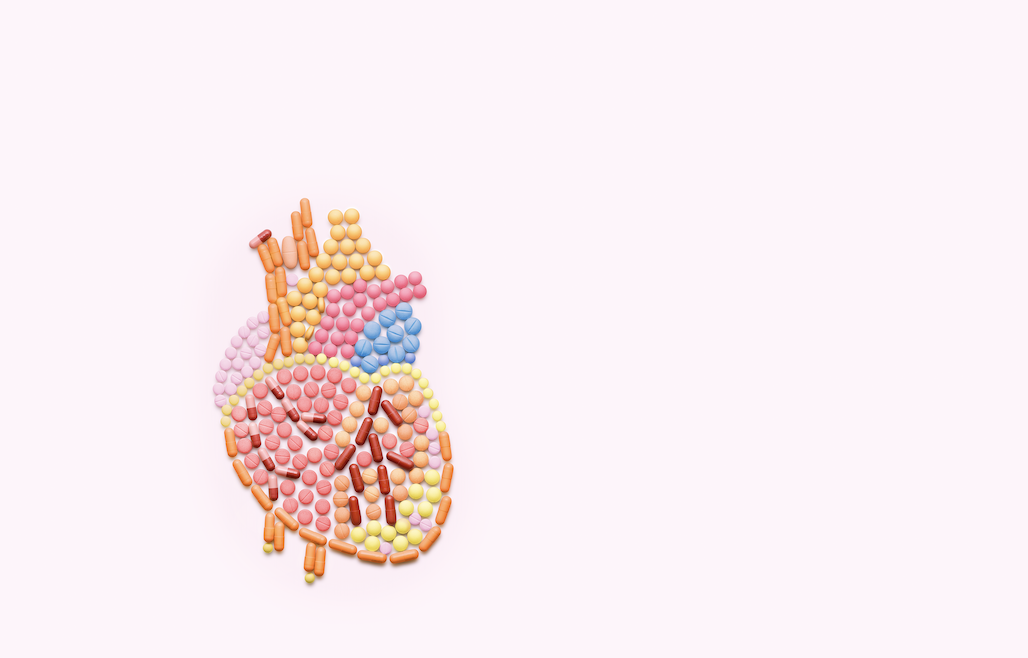Damien O’brien MPSI looks at the common causes of infant pain, as well as treatment considerations
Introduction
Pain is an unpleasant sensory and emotional experience associated with potential or actual tissue damage. It is a subjective experience, individualised to each person. Pain is a sensation of the body and is an unpleasant emotional experience.1 Infancy is defined as to up to one year old.2
Pain is one of the most underdiagnosed and under-treated issues in the infant population, with up to 40 per cent of children having pain complaints at least once per week and an estimated 15-to-20 per cent of children affected by chronic pain. Pain in infants can be caused by a wide range of factors, including medical procedures, vaccinations, teething, infections and chronic conditions. Muscle, bone or joint pain, headache and abdominal pain can form a range of chronic conditions that require pain management.
If chronic pain is untreated, it can psychologically affect children in ways that may cause issues later in life. In addition to this, untreated chronic pain in childhood can lead to chronic pain in adulthood. Despite this, paediatric pain is poorly assessed and managed, which can lead to adverse patient outcomes.
Unlike adults, infants can’t verbally communicate pain, which makes assessment and management more difficult. Recognising and addressing pain in this population is critical for their overall wellbeing and development.3 Infants are at a higher risk of adverse drug reactions from analgesic therapy if proper precautions and monitoring are not in place. Analgesics and anaesthetics are the cause for the majority of adverse drug effects in hospitalised infants.4
Pain assessment
There are many challenges in the assessment of pain in the infant patient population. Establishing the nature and severity of the pain provides useful information to implement an optimal pain management approach.
The main objectives of pain assessment in infants includes the identification of the aetiology of the pain, determination of the severity, duration, and aggravating and alleviating factors of the pain, and evaluation of the response to treatment. It is necessary to employ an assessment tool that is appropriate for the patient’s age. There are two types of assessment tools that are commonly used: Self-reporting, and observational-behavioural scales. The reliability of pain assessment tools increases with increasing age and the child’s cognitive ability. The main examples of commonly used observational-behavioural scales include FLACC (Face, Legs, Activity, Cry, Consolability), Neonatal Infant Pain Scale (NIPS), and CRIES (C-crying, R-requires increased oxygen, I-increased vital signs, E-expression, S-sleeplessness). Self-reporting measures depend on a child’s ability to measure and describe the location and degree of the pain, which is generally not reliable in infants.4,5
Unlike adults, infants can’t verbally communicate pain, which makes assessment and management more difficult
Infant pharmacokinetics
The pharmacokinetics of many analgesic drugs can vary widely in infants compared to adults, with the phrase ‘children are not small adults’ often used. The pharmacokinetic processes of absorption, distribution, metabolism and excretion are very different in infants compared to adults. Infants undergo significant growth and development during childhood that can alter pharmacokinetics of many drugs, which means a paediatric dose can’t always be extrapolated from an adult dose. Failure to account for the pharmacokinetics of drugs can lead to suboptimal dosing, adverse drug effects or toxicity. A proper understanding of the differences in absorption, distribution, metabolism and elimination is important to ensure effective analgesic therapy in an infant.6
Infant Pain – Warning Signs
Pharmacists play an important role in infant pain management using over the counter (OTC) treatment options, performing medication reviews and offering counselling and education on a wide range of issues. Additionally, pharmacists can screen patients for warning signs and refer to other healthcare professionals if necessary. Some of the warning symptoms that may accompany pain and require referral include:
- Less responsive than usual.
- Convulsions.
- Unusual cry.
- Severe pain.
- Unusually high or low temperature.
- Unusual rash or skin colour.
- Blood in the urine or stool.
- Vomiting and diarrhoea.
- Breathing difficulties.7
Formulation considerations
There are several factors to be considered when choosing a dosage formulation for infants. Formulations for infants are required to be appropriate in terms of dose, acceptability and convenience to ensure adherence. The oral route of administration is preferred due to convenience. The main oral formulations for infants are liquid dosage forms and include suspensions, solutions, syrups and emulsions.
One of the main drawbacks associated with the oral route in infants includes an unpleasant taste and risk of choking. Rectal preparations can be used to provide both local and systemic pain relief in children and can be delivered as suppositories, enemas, creams, ointments or foams. The rectal route of administration is useful in cases where the infant has difficulty swallowing oral medication, or in cases where nausea and vomiting may affect oral drug absorption.
The intravenous route can be useful in pain management in a hospital setting, as it allows a rapid onset of action, although the use of needles is associated with pain and fear in infants. There are examples of the topical and transdermal route of administration being used for analgesics, while certain analgesics can also be delivered intraocularly to reduce pain and inflammation locally, while lowering the risk of systemic side effects.8
Dosing by body weight
Dosing regimens in infants that are based on age are often inaccurate and can lead to lack of clinical effect, adverse effects and toxicity. Incorrect dosing of analgesics can lead to severe adverse consequences in infants and therefore dose calculations should be double checked.
Weight-based and surface area-based dosing regimens are relatively easy to use and important in certain clinical situations. Infants on long-term analgesic treatment may need dose adjustments as they grow and develop.9
Treatment
The World Health Organisation (WHO) has issued guidelines for the management of chronic pain in the paediatric population. These guidelines outline the importance of physical, psychological and pharmacological interventions for management of pain in paediatrics.
The guidelines emphasise that pain is a complex issue and is a result of biological, psychological and social factors. Pain management in infants requires a multifaceted and interdisciplinary approach. There are many pharmacological and non-pharmacological treatment options available for pain management in infants and these are outlined below.5,10
Pharmacological treatment
Paracetamol
Paracetamol is a safe and effective treatment option for mild-to-moderate pain and fever in infants. It is often the preferred analgesic due to its safety profile when dosed appropriately. The mechanism of paracetamol is not fully understood, but it is believed to involve multiple different pain pathways. The maximum recommended dosage is 15mg/kg per dose every four-to-six hours, with a maximum of 1g per dose and 4g per day.
Paracetamol has a favourable adverse effect profile when administered correctly. However, paracetamol has a narrow therapeutic index and overdose can result in acute liver failure or death. Malaise and skin reactions are possible adverse effects, but are uncommon. Paracetamol is contraindicated in infants with severe liver dysfunction. It is available OTC in both oral and rectal formulations.4
Non-steroidal anti-inflammatory drugs (NSAIDs)
NSAIDs also have effectiveness in treating infant pain. They work by inhibiting cyclo-oxygenase enzymes and therefore reducing inflammatory mediators. Ibuprofen is the most commonly used NSAID in the treatment of infant pain and is available OTC in both rectal and oral formulations.
Infants on long-term analgesic treatment may need dose adjustments as they grow and develop
Naproxen and diclofenac are other examples of NSAIDs that can be used to treat pain and inflammation in infants. Aspirin is not recommended for treatment of pain in infants due to the risk of Reye’s Syndrome. There is a wide range of potential adverse effects of NSAIDs, and these include nausea, vomiting, gastrointestinal bleeding, diarrhoea, raised blood pressure, dizziness and water retention. Contraindications and cautions in use of NSAIDs include allergy, moderate-to-severe dehydration, active bleeding, gastrointestinal ulcer, renal impairment, cardiac impairment and active chickenpox.
Combination therapy with paracetamol and ibuprofen is associated with improved pain relief and fewer adverse effects. These drugs are used in the treatment of mild-to-moderate pain in infants and can be useful as adjuncts in the treatment of moderate-to-severe pain.4,11,12,13
Opioids
Several different opioids are available to treat moderate-to-severe pain in infants. Opioids are usually reserved for severe pain, usually post-surgery or in cases of severe injury. Opioids can be effective in treating pain in infants, but they are associated with many adverse effects including sedation, nausea, constipation, pruritus and respiratory depression.
Infants are at a higher risk of respiratory depression due to the fact that their hepatic enzymes, renal function and hypoxic respiratory drive are less efficient than in adults. Therefore, opioids should be used with caution, with appropriate dosing and close monitoring.
Opioids can be co-administered with paracetamol and NSAIDs, with opioid preparations generally reserved for breakthrough pain and administered on an as-required basis. Inter-patient variability in metabolism of codeine by hepatic cytochrome P450 enzymes can lead to a higher risk of respiratory depression and death in infants. Therefore, morphine is considered the gold standard opioid for the treatment of pain in infants, with other options including fentanyl, methadone and oxycodone.4,11,14
Non-pharmacological treatment
A patient-centred approach should be followed in the treatment of infant pain that allows the patient to be an active participant in the pain management process. Non-pharmacological treatment options can be effective in reducing the pain experienced by an infant and often have a favourable adverse effect profile.
Non-pharmacological interventions are an essential aspect of a comprehensive pain management treatment plan in infants. Furthermore, these treatment options can generally be used alone or in combination with pharmacological treatment options.15
Distraction is a commonly used approach designed to guide an infant’s attention from the painful stimuli and therefore reduce pain and anxiety. Distraction techniques can include using toys, music or visual stimuli during painful procedures. Other interventions can include breathing exercises, non-nutritive sucking, and skin-to-skin contact. Positioning and holding in a comforting position can also help alleviate pain.
Massage therapy and physiotherapy can also be used to improve symptoms of pain. In addition to this, hot and cold therapy can be used to help decrease pain and inflammation. These methods can be safe and effective when practised by an appropriate practitioner. These techniques can be used as monotherapy or as an adjunct to pharmacological methods.15
Role of the pharmacist
Effective pain management in infants is crucial and requires a comprehensive, multidisciplinary approach. Pharmacists play a pivotal role in this process, including medication management, educating caregivers, and collaborating with other healthcare professionals.
Medication management involves tailoring pain management strategies based on the infant’s condition, severity of pain and response to treatment. Pharmacists are ideally placed to educate caregivers on the importance of adherence to medication and proper dosing to ensure optimal therapy and reduce adverse effects. Pharmacists also have an important role in educating on administration techniques and considerations around formulation.
Furthermore, pharmacists play an important role in identifying and managing potential drug interactions, as well as monitoring response to treatment. Finally, pharmacists are an important component of the multidisciplinary team, ensuring comprehensive care to infants as part of a pain management treatment plan.5
References
- Gorczyca R, Filip R and Walczak E (2013). Psychological aspects of pain. Annals of Agricultural and Environmental Medicine: AAEM, [online] Spec no. 1(1), pp.23–27. Available at: https://pubmed.ncbi.nlm.nih.gov/25000837/.
- Strouse PJ, Trout AT and Offiah AC (2022). Editors’ notebook: What is ‘pediatric’?. Pediatric Radiology, 52(12), pp.2241–2242. doi:https://doi.org/10.1007/s00247-022-05484-7.
- Mathews L (2011). Pain in Children: Neglected, unaddressed and mismanaged. Indian Journal of Palliative Care, [online] 17(4), p.70. doi:https://doi.org/10.4103/0973-1075.76247.
- O’Donnell FT and Rosen KR (2014). Pediatric Pain Management: A Review. Missouri Medicine, [online] 111(3), pp.231–237. Available at: https://www.ncbi.nlm.nih.gov/pmc/articles/PMC6179554/.
- Virginia YCT, BS Pharm, RPh Clinical Pharmacist/Freelance Medical Writer Haymarket (n.d.). Managing Pediatric Pain. [online] www.uspharmacist.com. Available at: https://www.uspharmacist.com/article/managing-pediatric-pain.
- O’Hara K (2016). Paediatric pharmacokinetics and drug doses. Australian Prescriber, [online] 39(6), pp.208–210. doi:https://doi.org/10.18773/austprescr.2016.071.
- HealthEd (n.d.). Baby and Child Sickness – Danger Signs – English version – HE4240. [online] Available at: https://healthed.govt.nz/products/baby-and-child-sickness-danger-signs-english-version.
- Batchelor HK and Marriott JF (2015). Formulations for children: problems and solutions. British Journal of Clinical Pharmacology, [online] 79(3), pp.405–418. doi:https://doi.org/10.1111/bcp.12268.
- O’Hara, K (2016). Paediatric pharmacokinetics and drug doses. Australian Prescriber, [online] 39(6), pp.208–210. doi:https://doi.org/10.18773/austprescr.2016.071.
- WHO (2020). Guidelines on the management of chronic pain in children. [online] www.who.int. Available at: https://www.who.int/publications/i/item/9789240017870.
- Society CP (2022). Best practices in pain assessment and management for children | Canadian Paediatric Society. [online] cps.ca. Available at: https://cps.ca/en/documents/position/pain-assessment-and-management.
- NHS (2020). Diclofenac. [online] NHS. Available at: https://www.nhs.uk/medicines/diclofenac/.
- NHS Choices (2020). Naproxen. [online] NHS. Available at: https://www.nhs.uk/medicines/naproxen/.
- Friedrichsdorf SJ and Goubert L (2020). Pediatric pain treatment and prevention for hospitalized children. PAIN Reports, [online] 5(1), p.e804. doi:https://doi.org/10.1097/pr9.0000000000000804.
- Srouji R, Ratnapalan S and Schneeweiss S (2010). Pain in Children: Assessment and Nonpharmacological Management. International Journal of Pediatrics, 2010, pp.1–11. doi:https://doi.org/10.1155/2010/474838.







